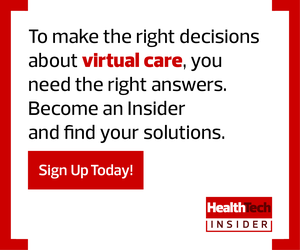The times are changing, and how people expect to consume healthcare is following suit. This is according to a recent survey from Accenture, which found that younger generations, including millennials (the cohort born after 1985) and Generation Z (those born after 1995) are more likely to turn to new care models, such as virtual visits and retail clinics, in lieu of traditional care models.
This is likely because younger generations expect a different standard. According to the survey, these generations, in particular, were more likely to express dissatisfaction with current healthcare delivery models and less likely to embrace traditional care factors, such as primary care physicians. While 84 percent of baby boomers reported having a PCP, only 55 percent of those in Generation Z said they had one, noting that PCPs didn’t meet their budgetary or convenience needs.
Changes like this are likely to push new care models forward, especially those that embrace technology, as demographics shift. In fact, according to Bloomberg, millennials and Generation Z combined currently represent more than 60 percent of the population.
MORE FROM HEALTHTECH: Millennials have begun to expect telehealth.
Digital Tools Become a Patient Expectation
So, what exactly do younger generations expect, and what will it mean for providers? For starters, patients are beginning to choose providers that offer digital capabilities (such as mobile access to test results or online prescription refills) over those who don’t, with younger consumers taking this into account more than others.
In fact, over half of all patients surveyed expected providers to have the ability to communicate digitally, and 70 percent said they were more likely to choose a provider that offered the ability to follow up or send appointment reminders via email or text.
“People want to connect,” Susannah Fox, a health and technology researcher and the former CTO for the U.S. Department of Health and Human Services, explained in a recent column on HealthTech. “They want to give and receive advice. They want to get better, together. Based on what we are seeing in the technology trends among teens and young adults, search, mobile and social are the path forward. How providers adapt to the changing landscape could very well be the difference between success and failure.”
But even adapting old-school technologies, such as phones, to improve communication can take both patient and staff satisfaction to the next level. At Virtua Health in New Jersey, for instance, the organization integrated new IP phones with electronic health records to enable staff to have a more meaningful and personalized conversation with patients when they call to schedule appointments.
“When the phone rings at our call center, a screen pops up showing who’s calling, so the staff can view their records, identify them by name and have a really good conversation,” Senior Vice President and CIO Thomas Gordon says, tells HealthTech.
This type of personalization can deliver the types of care experiences younger generations expect and appreciate from their care organizations.
VIDEO: Telehealth evolves to bring care closer to the client.
Patients of All Ages Embrace Telehealth
Consumers have become much more comfortable with telehealth, as well. While telehealth may feel novel, 29 percent of respondents noted they had already used some form of virtual care, and many more are open to embracing it, with 53 percent of consumers reporting they are more likely to use a provider that offers remote or telemonitoring devices. This is a jump from just 39 percent who said it would influence their decision in 2016.
“Virtual care has become an appealing channel for consumers with more complex needs,” the report notes, adding that 26 percent of those with complex needs reported they would use virtual care for routine therapy or mental health needs, 24 percent noted they would use the tech for treatment of a physical injury and 23 percent said they would use telehealth for sexually transmitted disease screenings.
“As more patients take control of their own healthcare, provider organizations must offer meaningful choices that fulfill the needs of all generational groups,” said Kaveh Safavi, M.D., J.D., head of Accenture’s global Health practice, in a press release. “Providers and payers who stay one step ahead of the shifts and deliver what patients are looking for will be the ones to earn loyalty, navigate disruption and be strongly positioned as the future unfolds.”
To do this, organizations have to have the proper IT infrastructure in place to make the most of telehealth tech. What does that take? According to a recent CDW white paper, that can mean leveraging tools like live and interactive video and patient engagement apps, as well as more out-of-the-box technologies, such as advances in consumer technologies, including Internet of Things and smart home technologies.
Organizations such as Penn Medicine, the University of Pennsylvania’s health system, are doing just that and putting the proper IT infrastructure in place to make telehealth programs successful. Penn Medicine recently launched a telehealth hub, known as its Center for Connected Care, that combines all four of its telehealth services. Touching on multiple aspects of care, Penn Medicine offers telehealth services for the critically ill, one that connects obstetricians with trauma surgeons, a tele-homecare service for critically ill patients and a tele-urgent care program, HealthTech reports.
While most providers are only now beginning to launch telehealth services — which can often be fragmented based on needs — centralizing the system has major benefits from both a vendor and care delivery perspective and can help organizations like Penn Medicine keep up with care delivery and patient expectation.
“You can use telemedical care in post-op care; you can use it in end-of-life care,” Dr. William Hanson III, Penn Medicine’s chief medical information officer, tells HealthTech. “There are a lot of ways in which telemedicine can really significantly change the way that we care for patients today, and the technology gets better and better every year in terms of the fidelity of transmission.”











